
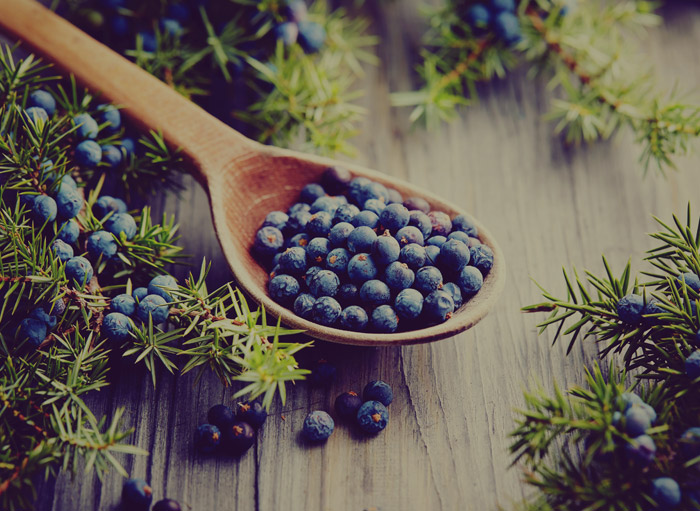


Scottish Gin – a gin category built on trust and quality. Some call it the Scotland effect or brand Scotland. It could be put down to Scotland’s rich and vivid history. It could be the ties forged over the centuries through Scots emigrating to the four corners of the world. It could be Scottish inventions and discoveries that helped to shape the modern world. It could be the creative spark behind the many great poets, writers and authors, their writings forever intertwined in our lives. It could be the romanticism and the way Scotland has been portrayed on the big screen from the early black and white movies to more recent blockbuster films and TV series. Whatever ‘it’ is, Scotland has it in spades.
Our food and drink sector is no different, Scotland’s food and drink is admired, desired and respected the world over. Scottish food and drink has become a watchword for quality with all manner of food and drink including oysters and salmon, Aberdeen Angus beef, whisky, and more recently, craft beers and ales, all helping to build the reputation of Scotland’s larder.
Amongst these food and drink categories sit some very well known global brands – Glenfiddich, Walkers Shortbread, Brew Dog, Tunnock’s, Baxters, and a list of recognised protected Geographical Indicators – Scotch Lamb, Scotch Beef, Scottish Wild Salmon, Arbroath Smokie, Bonchester Cheese, Stornoway Black Pudding, Orkney Scottish Island Cheddar, Scotch Whisky and more.
Still in its relative infancy compared to some of these categories, for the Scottish Gin category to continue to grow successfully, it must be positioned as a product of Scotland. At this early stage in the story of Scottish Gin, it’s fundamental that Scottish Gin is easily identified as not only a premium spirit distilled, rectified or cold compounded in Scotland, but also promoted as a gin category in its own right.
It’s crucial that Scottish Gin as a drinks category can break the shackles of potentially being seen as just another trend or part of the current gin boom. The term Scottish Gin needs to be clearly defined and agreed upon from within the industry. A definition will provide a solid foundation for both the category of Scottish Gin and it will help the consumer buy with confidence and give them the knowledge to make an informed purchase. It will allow Scottish Gin to be confidently promoted on the global stage as part of the Scottish Food & Drink portfolio as a product of Scotland.
We firmly believe that the longer the issues surrounding Scottish Gin rumble on behind closed doors, the more the consumer and the Scottish Gin category has to loose. The industry’s time and energy would be better spent speaking about the positives of why the consumer should be seeking out Scottish Gins as their gins of choice.
What defines a Scottish Gin as being Scottish is something we’d like to see agreed upon across the category in 2019, a definitive answer on what is a Scottish Gin and what should the criteria be for a gin to be classed within the category as a Scottish Gin. For us, once again, it’s about where the process happens, so distillation, cold compounding or rectifying takes place in Scotland. It’s the criteria we use for which gins we list in our Scottish Gin directory, for right or wrong, we believe this is what the definition of a Scottish Gin should be.
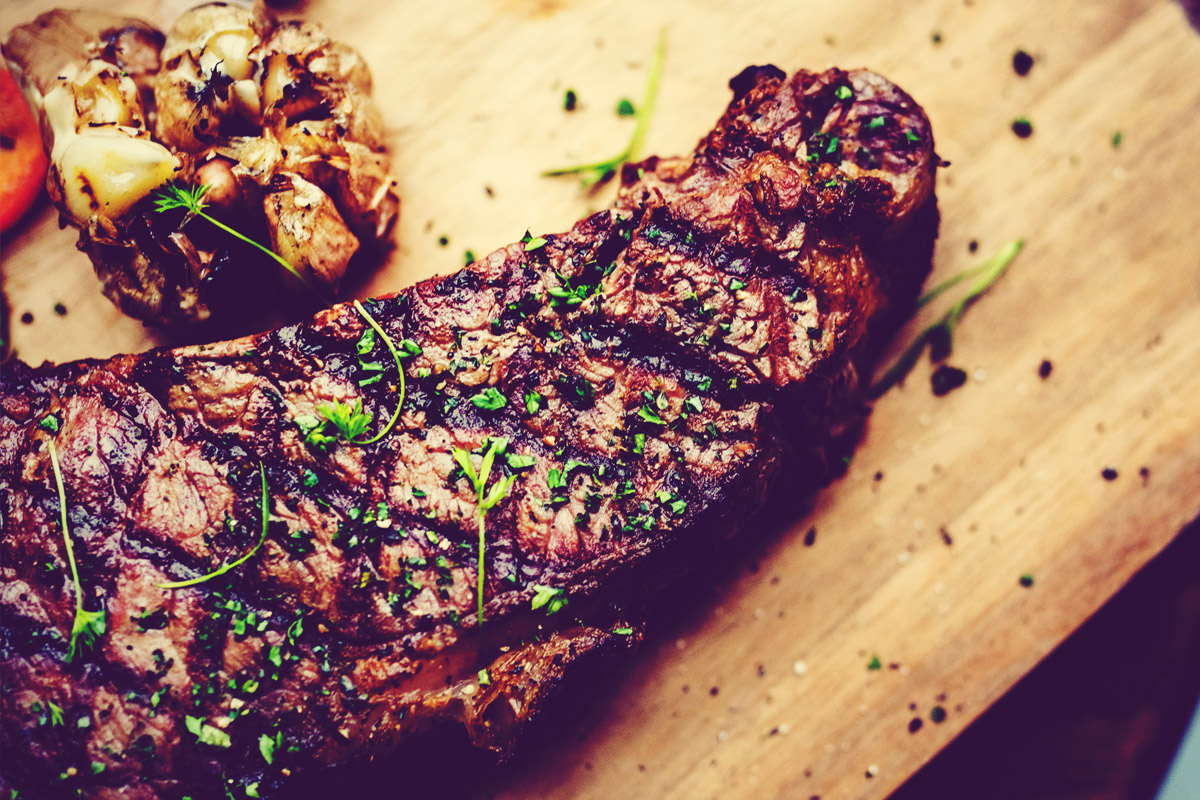
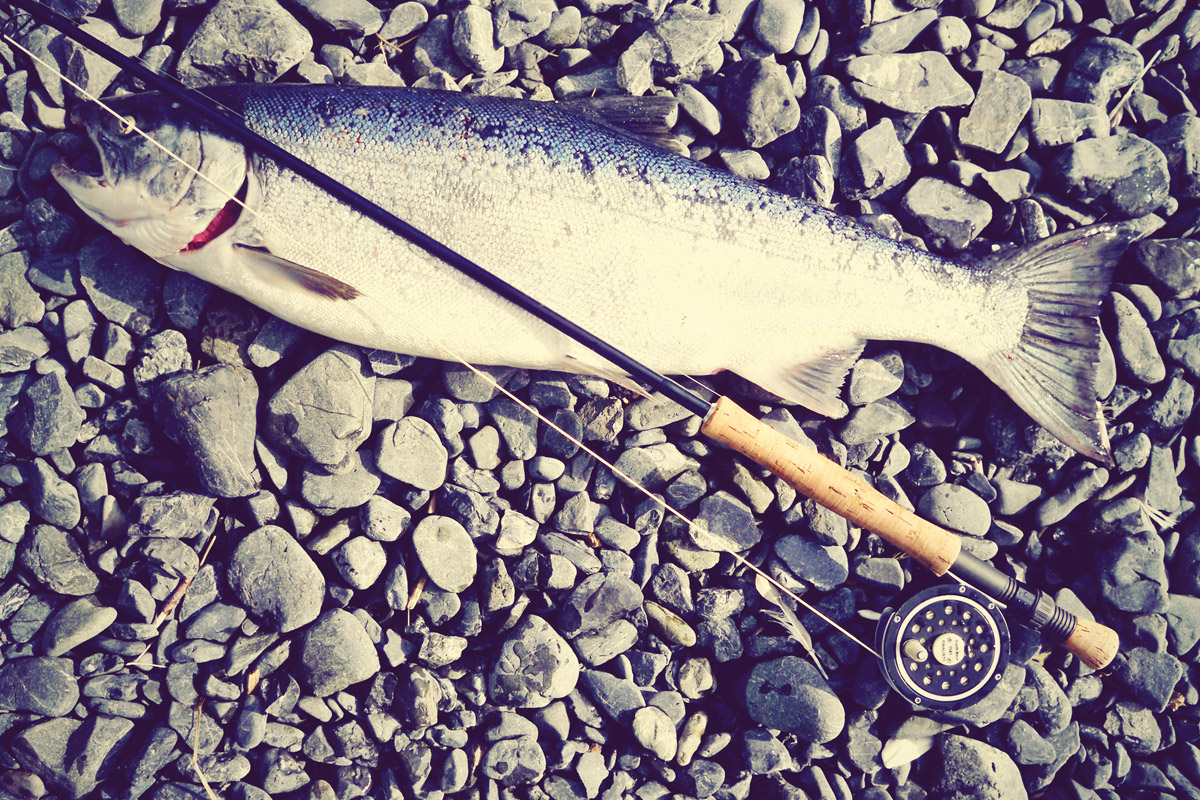
Scottish Gin – does it matter?
As gin consumers, it wasn’t something we’d ever given much thought when buying Scottish Gin – is it made in Scotland? We just naively presumed that if it mentioned a Scottish location or the word Scotland on the label then surely it must be made in Scotland? Wrong. It’s part of the reason that spurred us on to establish The Gin Cooperative.
Some might say, but why is defining the term Scottish Gin a big deal? Isn’t it only the industry that’s concerned and not the consumer? What does it matter if the packaging uses a place name that is not where the gin is made? Some say it’s not needed right now. Some say it’s not needed at all. We say the definition is sorely needed. But why is it required, why does it matter? We feel it’s essential for many reasons.
Defining what a Scottish Gin is would help clarify and provide transparency concerning provenance and production for gin makers in the industry. In turn, this helps educate the consumer so they can make an informed choice. It removes the chance of the consumer feeling cheated when they find out the gin they thought was distilled in Scotland, is not made in Scotland. Another vital step would be defining what the term Scottish Gin means and can also provide the groundwork for Scottish Gin to be a trusted and recognisable gin category in its own right, a truly unique opportunity.
Won’t defining what a Scottish Gin is be seen as parochial or backwards?
We can be fiercely proud of our traditions and our history, and although it’s taken time and a lot of effort by various organisations, Scotland as a brand has grown to represent a country that should be experienced. The landscape, the people, the food and drink and so, so much more. The image of a modern, vibrant, multi-cultural, innovative place to live, work, establish a business, invest and visit is the Scotland we know. Our food and drink sector continues to thrive and grow as set out in the recent objectives of Scotland Food & Drink Ambition 2030 to develop the sector into a £30bn industry by 2030.
There can be no doubts Scottish Gin, Scottish Spirits, brewers and Scottish drinks producers, including soft drinks and premium Scottish tonic brands will all play a vital role in both Scotland’s reputation as a food and drink producing country but also the Scotland Food & Drink Ambition 2030 plan.
Seeking protection for a thriving, creative and exciting part of Scotland’s food and drink portfolio is the right approach. With the right help and support, Scottish Gin will comfortably sit alongside whisky as a product of Scotland. For us, as gin drinkers, with a Scottish based business built around the drink we love, it makes perfect sense why Scottish Gin as a gin category and spirit must be safeguarded.
Won’t it stifle innovation?
We believe defining what a Scottish Gin is, will not stifle innovation. We believe it will have the opposite effect. By agreeing on a definition, it creates a solid foundation and framework for Scottish Gin as a category. It will provide new gin makers and spirit makers with a guide on the benefits of establishing a distillery in Scotland, or in some cases, the benefits of contract distillation in Scotland. Being able to promote your gin as part of the Scottish Gin category will undoubtedly brings benefits to the gin makers.
Defining what a Scottish Gin is based on geographical location of production will not hamper distillers abilities to create, experiment or explore new products. If anything, it will provide a basis for innovation knowing that as long as it’s being made in Scotland, is juniper forward and meets the right ABV then there is plenty of scope to innovate and for product development.
With a framework in place, it also means that gin makers and gin brands will be in a position, both from an operational and strategic perspective, to decide how far they can push the boundaries knowing perfectly well where any new products can sit in the Scottish Gin category.
Won’t it cripple the Scottish based businesses who make their gin outside of Scotland?
No one wants to see businesses suffer. Nor would defining what a Scottish Gin is, set out to harm those gin brands that are made outside of Scotland. Defining Scottish Gin as a term and as a gin category first and foremost should be about protecting the consumer. Secondly, it should be about helping nurture, protect and grow Scottish Gin as a category.
What we hope it would do is provide additional business and operational reasons for the Scottish Gin brands that are being made outside of Scotland to bring their gin production back to Scotland. Once here, they know they can be part of the wider Scottish Gin family of products and benefit from being part of the category and write their own chapter in the story of Scottish Gin.
No one can say gins made outside of Scotland are inferior. There are some really amazing gins, that as gin drinkers, we’ve really enjoyed. This isn’t about trying to pigeonhole Scottish Gins made outside of Scotland as inferior – far from it. Defining what a Scottish Gin is, is about protecting the use of the term and what it represents. It’s also about ensuring that the term Scottish Gin has real meaning, that it becomes a term that adds value to a gin because of its authenticity and quality. A term that protects the consumer. A term that the consumer sees as a mark of quality. A term they trust. If gin brands want to have the benefit of using the term to add value to their gin, then it simply must be true to the definition and be made in Scotland.
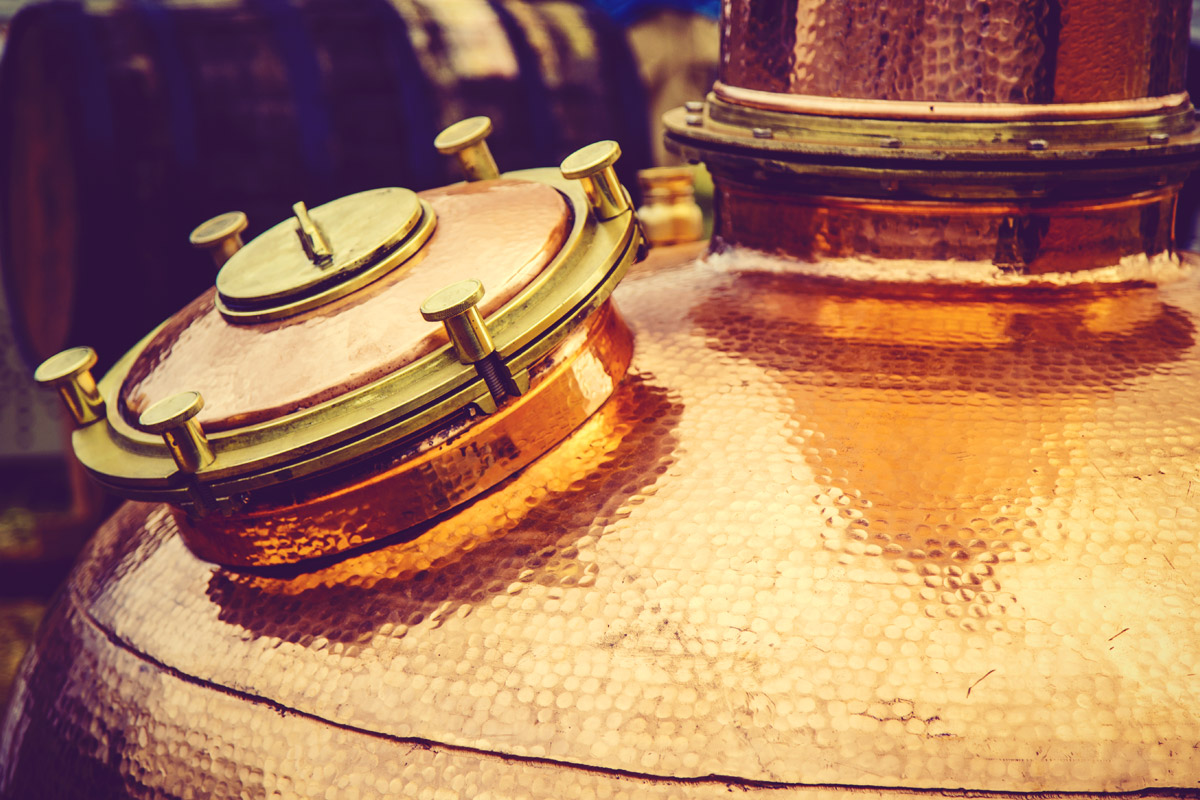

Does the consumer really care?
As the gin category and market continues to grow, we’ve seen more and more people discover gin. Although far from scientific and more of an observation than a definitive industry breakdown, we’ve seen patterns between different types of gin drinkers.
The casual gin drinker who enjoys a glass of gin, isn’t overly worried about where the gin they are drinking is made. They perhaps have three or four bottles of gin at home and the question of ABV and juniper doesn’t stop them from buying or trying a spirit that has gin on the label. They love gin liqueurs and see gin as being fun.
The gin connoisseur who has been drinking gin for a number of years, understands the importance of tonics, garnishes, ratio, botanicals and more. They’ve educated themselves about the category, like to know where the gin they’re drinking is made, which botanicals are used and they have a healthy gin collection at home and want to explore gin.
The gin expert knows what gins are made where, understands flavour profile and knows how gin is made, knows the legal definitions of gin, has a healthy dislike for brands and gins that are not legally gin, has or does work in the spirits industry or on/off trade, has a carefully curated gin collection, actively engages with brand owners and gin makers on social media. They understand the category and sector.
The question of provenance is one that perhaps doesn’t concern the casual gin drinker, but as we know ourselves, enjoying gin can evolve from being a drink you enjoy to a drink you enjoy and want to understand.
Most gin drinkers, in general, seem eager to learn more about the drink in their hand. It might be down to gin shaking its reputation of ‘mother’s ruin’, with gin now viewed as a premium, quality drink. With that comes the desire to know more about the drink, why is it classed as a quality spirit and why is everyone talking about gin? Everyone’s drinking it, so it must be good. There’s also the price point. With consumers spending upwards of £35.00 on a bottle of gin, they want to know where their money is going. What are the botanicals? Where was the gin made?
Location, Location, Location
Nope, not Kirsty and Phil. Where in Scotland is a gin made? It’s another complication of linking a gin or gin brand with a place. It could be a city, a town or a specific region and for many consumers, it’s assumed if you’re using a place name then it must mean you make your gin there. Unless of course you’ve taken the sensible approach and state on your packaging where your gin is distilled.
With Scotland’s rich and vivid history, it’s little wonder that Scottish Gin makers and brands draw upon their local landscape as inspiration for their gins and businesses. After all, often it’s the local legends, the folklore that’s been passed down through the centuries, the soil, the earth, the hills, rivers and oceans, that directly play a role in shaping both gins and the people who make them.
Most of the gin makers we’ve spoken with who reference a place or region in their business name or packaging but don’t make their gin in that place, have long term plans to build their own distillery and bring their production back to where their business is based.
Some have said this is little more than smoke and mirrors from gin makers who have no intention of ever tying the place name to where their gin is made. From the discussions we’ve had, there are positive signs that gin makers and gin brands are prepared to relocate their production to where they say they are based.
This is often a costly and complicated process so we appreciate this doesn’t happen overnight and often, as the gin brand’s strategy is build, the brand make good quality gin, grow a loyal customer base, then relocate production and build a distillery. Not every Scottish Gin brand will follow this path but there are clear examples of this strategy being implemented and followed through. It goes without saying that using a geographical location or stories tied to a particular area provide a narrative around which to build a brand and grow a business.
For the consumer, it’s expected that if you say X on the bottle then your Gin should at least be made in X. For example, you could produce a gin at the top of Snowdonia, ship it to Scotland, bottle it, write Scottish Gin on the label and there’s not a single thing anyone could do to stop you. In most cases, the consumer would be happily unaware, unless of course you bought that gin because you believed it to be a product of Scotland. It’s when the consumer does discover the facts that the fallout has the potential to damage the reputation of Scotland’s gin makers, cloud consumer confidence and damage Scottish Gin as a category, both in the local marketplace and in other international territories.
Many of the issues surrounding provenance and geography aren’t solely limited to Scottish Gin. Gin makers and brands across the UK are faced with the same potential problems. We would hope that by defining what a Scottish Gin is, it might encourage other gin makers in other parts of the UK to seek agreement and clarity on the gins made in their respective countries and local regions. As gin drinkers, it’s been great to see new gin brands come to market from other parts of the UK and other countries including Australia, Ireland and some of the Nordic countries. Perhaps it’s wishful thinking, but we feel there is indeed an opportunity for like-minded gin makers and brand owners to seek a collaborative approach to overcome the specific issues they face.


SDA & Scotland Food and Drink
We were recently invited to attend the Scottish Distillers Association meeting in Edinburgh so we could better understand their position on Scottish Gin and spirits and gain some insight into the SDA objectives. Formerly the Scottish Craft Distillers Association, the organisation was brought under the remit of Scotland Food & Drink after a transitional period over the course of 2018. The SDA goals are to support Scottish spirit makers who meet their criteria for membership and help them explore new trade opportunities, support their business objectives and more.
There is a hope within the industry that the SDA can drive and deliver change across specifically Scottish Gin, help guide and support the Scottish spirits sector, and in particular support smaller spirit makers. There also appears to be a hope that the SDA and Scotland Food & Drink can begin the groundwork of introducing a framework for what a Scottish Gin is and as a category how Scottish Gin can be protected. This is an ambition, as we’ve set out in this article, that we are eager to see happen in 2019.
Whatever direction the SDA go in, it must be for the good of all Scottish spirits brands and gin makers who are based in Scotland. It must be focused on supporting new brands as they come to market including, in our opinion, brand owners of contract distilled gins that are made in Scotland.
In our opinion contract distilled gins are vital to the growth of distillation in Scotland and the broader Scottish Gin category. Medium to long-term, we feel any exclusion of gin brands that contract distil would potentially be damaging to the growth of the category. It would devalue the story of Scottish Gin if in the future the category is faced with a tiered system of protection. However, gins that are contract distilled and brand owners must ensure that their contract distilled gin is of excellent quality. The idea of a Scottish Unicorn Parma Violet Shimmer Strawberry Ice Cream Chocolate gin bottled at 20% ABV fills us with utter dread.
We value and respect the commitments that have been made by gin makers who have established a distillery, jumped through the hoops, and made that financial commitment to make their own spirits. We’re often left short of words (although this article maybe doesn’t feel like it if you’ve read this far!) the amazing things we’ve seen across the different regions of Scotland. Businesses of all descriptions investing, innovating and creating Scottish Gin. It is a fantastic industry.
Everyone has to start somewhere. If that means starting as a contract distilled gin that evolves into a recognisable brand of excellent quality, that one day sees that brand build their distillery, then for us, it’s a positive.
2019 – a year for change?
Creating and nurturing trust with customers is vital for any business. It’s key to successful growth and building long-term relationships and Scottish Gin as a drinks category is no different. Trust in the term Scottish Gin and what it represents has to be steered and guided from within the category to ensure the consumer isn’t being misled or mis-sold. It’s also vital how Scottish Gin is being presented to an international audience and reinforces that Scottish Gin as a gin category and as a spirit is recognisable as being of a premium quality originating from Scotland.
Steps to defining what is a Scottish Gin?
1. Scottish Gin – a product of Scotland
First and foremost. the term Scottish Gin should mean a juniper-based spirit that has been distilled, rectified or cold compounded in Scotland and meets the minimum 37.5% ABV. It should also be a mark of quality, a sign that if you are buying a Scottish Gin, you know it’s of high quality. Flavour is subjective and so is gin. We all have our preferences, likes and dislikes, so not every Scottish Gin will be universally enjoyed, but if the term Scottish Gin can become a trusted term for a high-quality, premium spirit created in Scotland, then it can only go from strength to strength.
Seeking a Geographical Indicator would be a timely, cost intensive process that could potentially take years depending on the outcome of the UK leaving the EU, and depending on the final framework, could see many Scottish Gins excluded if the GI was based around ingredients rather than focusing on Scotland as the place where the distillation takes place. Saying this, we feel that once the dust settles or at the nearest opportunity, being able to seek a Geographical Indicator for Scottish Gin as a category based on where the process happens would bring benefits to the category. As consumers, looking at other Scottish GI’s, we see it as something that builds trust and helps to protect the consumer. It also appears to help protect and safeguard the businesses working under the relevant GI as well.
2. Scottish Gin – botanicals and NGS
The industry, on the face of it, and based on the discussions we’ve had, sees Scottish Gin as a juniper based spirt that’s made in Scotland. It’s not about where the NGS or botanicals come from, it’s about where the process to create the spirit happens. Those gin makers and gin brands that are in a position to use locally sourced botanicals, either through careful planning, cultivation of their land or through sustainable foraging, are in a unique position. It provides these gin brands with a USP, it lets them shape their gin around the literal shape of their local landscape. For most gin makers, some of the most common botanicals in gin can’t naturally be grown here in sufficient quantities to sustain demand due to the Scottish terroir.
NGS (Neutral Grain Spirit) is basically the blank canvas used with botanicals to create gin and has been another talking point. There are a few Scottish distillers who are in a position to create their own NGS, which is a costly, expensive and time consuming process. From field to bottle and grain to glass, there are a select handful of Scottish Gin makers who are able to take this approach. Again, this provides those brands with a USP that they can use to shape the narrative around their business and products.
Determining if a Scottish Gin is Scottish shouldn’t be based on where the botanicals come from, including where the NGS is sourced, but rather where the gin creation process happens.
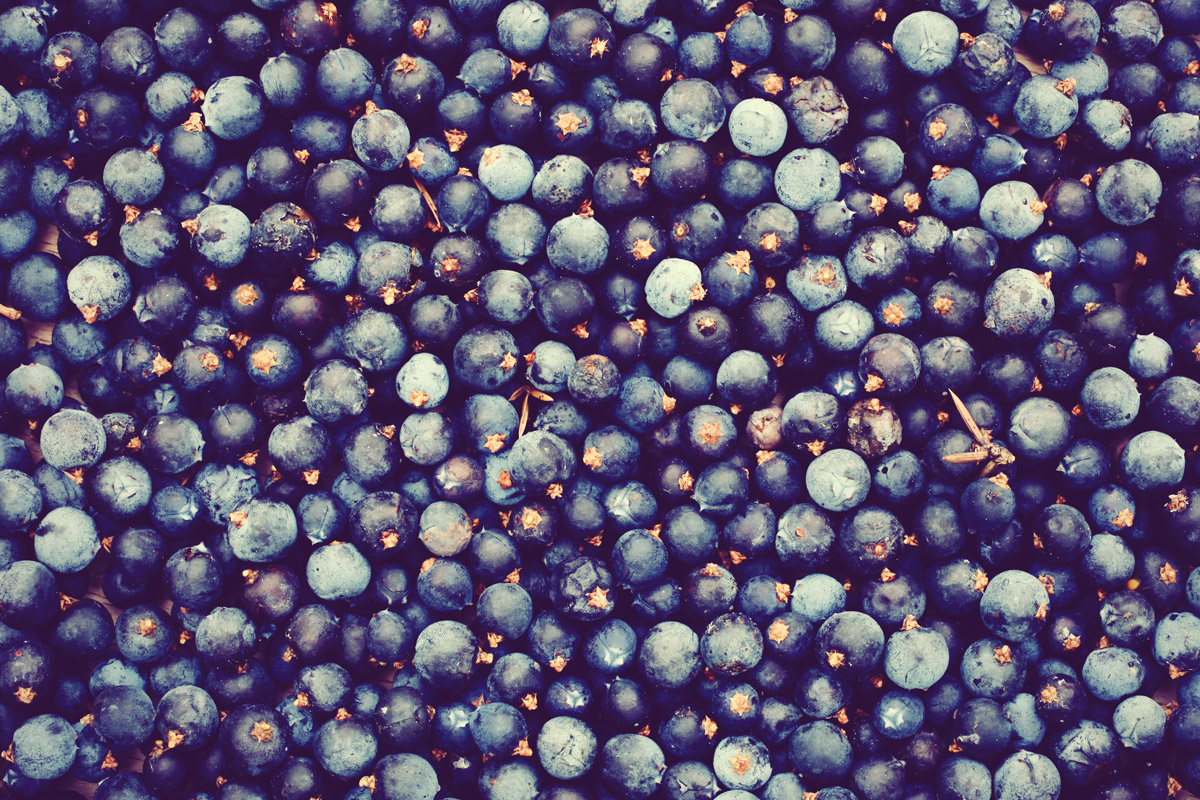
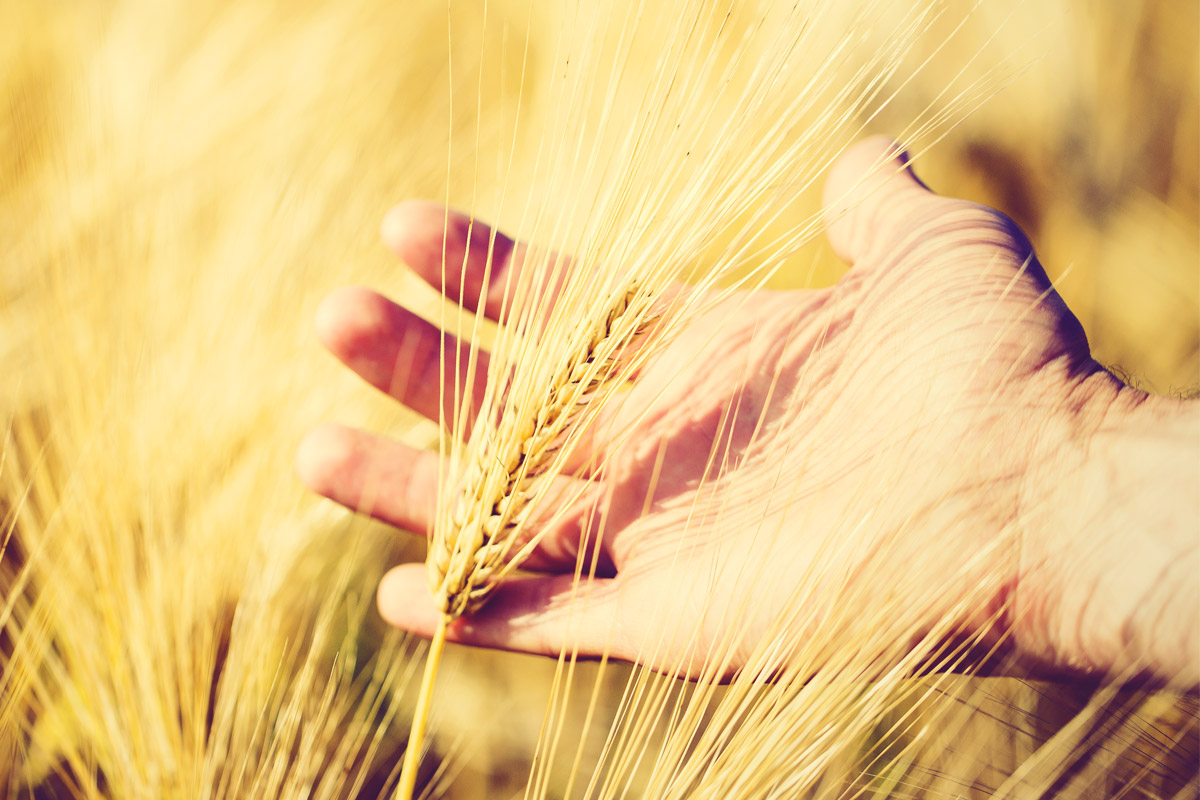
3. Scottish Gin – a mark of quality and excellence
It’s also of great importance that the term Scottish Gin becomes a sign of quality. It’s essential that the term is an indication of geographical origin, but it must also become a mark of quality for the consumer, that the gin they’re buying is a quality spirit. We’re in a very fortunate position that Scottish Gin makers and brand owners strive to create world class spirits. With a crowded gin marketplace, gin makers must produce quality, authentic spirits if they are to succeed long term. For the gin makers we’ve met, this is fundamental to the spirits they produce.
4. Scottish Gin – contract distillation
We believe all gins being made in Scotland, and actively promoting themselves as a product of Scotland, should be afforded the same recognition of being a Scottish Gin. A good example would be a person that creates a great gin recipe at home and would like to upscale their gin making by working with a contract distiller. Their gin continues to sell and they’ve created a valuable addition to the story of gin, working hard to build a business and produce an excellent gin. They’re then able to build a distillery, employ staff and create a gin experience for visitors.
Another good example for contract distillation being afforded the same recognition, would be a distillery that didn’t plan to contract distil. They perhaps face some leaner times or a big order falls through. It would be wrong to deny this distillery the opportunity to bring in some well needed income if it meant offering a contract distillation service.
We understand and respect the opinions of those in the category who have voiced their frustrations about contract distilled gins, but we also understand not everyone can establish a brand in the same way, for a variety of reasons.
5. Scottish Gin – an industry led by transparency
As consumers, generally, we buy with our eyes. We see something on the shelf and are drawn to the packaging. When you see a bottle of gin on a shelf, which has Scotland on the label, you make the association that this gin must be made in Scotland. The same can be said of specific cities, towns, regions often found on packaging, or in some cases, the brand name.
Credit where credit is due. Most Scottish Gin brands clearly state where their gin is distilled or at least on the face of it, it’s very obvious through their website or marketing materials. For some, Scottish Gins that have built a brand around a place, including cities, but distil their gin elsewhere, leaves the door open for criticism and potentially harming consumer confidence if it’s not made clear on the packaging where the gin is distilled.
For complete transparency, it would be beneficial for all Scottish Gin brands to provide where their gin is distilled on their packaging. It would help remove the risk of the consumer feeling like they’ve been hoodwinked if they discover that the gin they just bought has nothing more than a registered business address in the place embossed on the front of the bottle.
For some gin brands, this might prove a costly process. For some contract distilled gins, the place of distillation might also change, making any packaging outdated and resulting in waste. A possible, flexible solution would be the creation of a Scottish Gin Consumer Charter. A document that would clearly indicate where a Scottish Gin business is based and where they make their gin.
6. Scottish Gin Consumer Charter
Our website clearly shows, for all Scottish Gin makers and Scottish Gin brands, where their business is based and where their gin is made. However, there’s nothing available for the consumer or industry to use as a coherent downloadable reference, that shows all Scottish Gin brands.
In 2019, we will be publishing a Scottish Gin Consumer Charter. It will be a free to download document that will be managed and updated on a regular basis, that clearly and easily identifies where Scottish Gin is being made. We will also introduce the second development phase of our website that will provide a variety of new features for our Scottish Gin section and provide greater clarity for our audience.
A Scottish Gin Consumer Charter can help provide clarity to all and we hope will remove the on-going shadow of doubt over some brands. With between 12,000 – 15,000 unique visitors per month to our website, we believe a document of this kind will be a valuable resource.
We believe there’s an opportunity going into 2019 to seek agreement across the Scottish Gin community about the points and ideas raised in this article. We think in the time being, until Scottish Gin is given some form of official and legal protection as a gin category and spirit, that self-regulation and a framework of agreement on some, if not all, of the points above could be agreed and introduced in the first half of 2019.
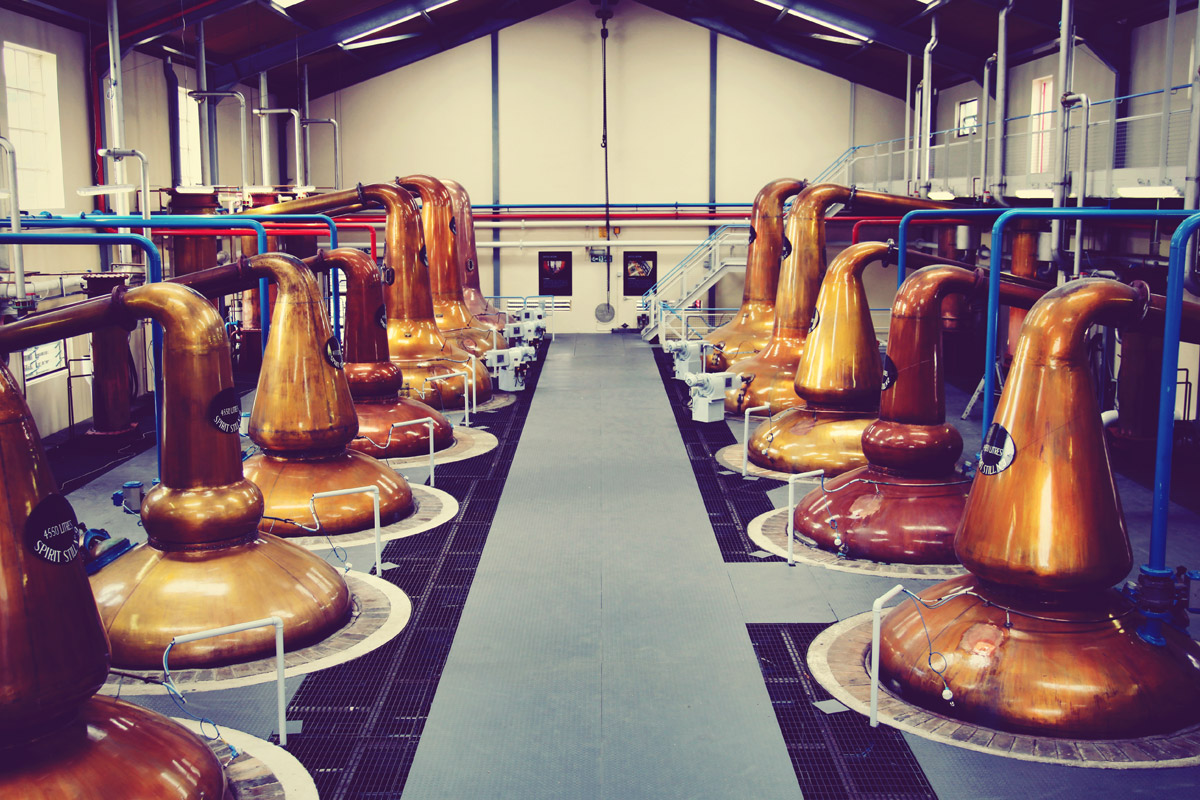

Our approach
The commitment we make to Scottish based gin brands, that make their gin outside of Scotland is that we will only ever undertaken our activities in a way that doesn’t name and shame, that doesn’t aim to humiliate or devalue any Scottish based business that make their gin outside of Scotland. Having corresponded with a number of Scottish Gin brands who distill outside of Scotland, we are always happy to have a chat and our door is always open so if there is anything you would like to discuss pick up the phone or drop us an email.
This article isn’t about trying to shame anyone or damage reputations. We’ve met a lot of talented people who work extremely hard building their brand and business but don’t make their gin in Scotland. We have the utmost respect for those brands who from day one told us where their gin was being made and/or why it’s not made in Scotland, highlighted their long term goals but also explained how their business model and operations help create jobs and play a role in the economy. There are also brands that use Scottish botanicals in their gins but distil elsewhere. These gins brands who are open and transparent about their provenance should be applauded for their honesty to the consumer and the Scottish Gin category.
We admire what author and journalist Sean Murphy says in his new book, Gin Galore, about the conflict he felt of excluding gins from his book. It’s something we also went through, deciding if we would make The Gin Cooperative a resource about all Scottish Gins, including those made out with Scotland, or aim to work exclusively with the gin makers and brands whose gins are made in Scotland. Based on discussions with Scottish gin makers and our own personal experience as consumers, we set strict criteria, made our stance public on what we consider makes a gin Scottish and have stuck by it ever since.
It wasn’t easy knowing that we would be excluding a variety of gin brands. It wasn’t nice as a new business having to say no to Scottish based businesses, but we had to build our stance and business on integrity and doing what we feel is right as consumers.
We believe the ideas and principles of this article could be achieved and implemented quickly and would at least bring together a consensus across the category and formally establish a temporary framework until an official, legal framework that protects Scottish Gin was introduced. It’s something we will be exploring in January 2019 – how to help and educate the consumer, seek to protect the reputation of Scottish Gin as a category and the individual Scottish Gin makers and brands we work with and support.
We are not an industry body and we don’t speak for and on behalf of all Scottish Gin brands. To do so would not only be extremely arrogant but would be a disservice to the many great organisations and others in the Scottish Gin and Scottish Spirits category. What we are is a Scottish Gin related business with responsibilities to our stakeholders we work with, we have ideas and strong opinions on how we can support the industry, how the protection of the Scottish Gin category and gin consumers can be protected.
We’ve made our stance clear from the outset what we consider makes a Scottish Gin ‘Scottish’ and made it clear we are determined to support the gin makers who make their gin in Scotland. Going into our second year of business, we are eager and determined to make sure our activities raise the profile of Scottish Gin. We will continue to position Scottish Gin to the consumer as a drinks category they should be exploring for its diversity and quality and help them discover the unique stories and amazing people who make up the collective story of Scottish Gin.
We’ve been humbled to have a wide variety of Scottish Gin makers who have signed up to be stakeholders, from the biggest, global Scottish Gin brands to some of the smallest, unique Scottish Gin brands. The brands that work with us understand and share similar objectives of supporting and sharing the story of Scottish Gin.
We will be pushing things forward and will be speaking to our stakeholders in January to get feedback on a variety of topics so we can ensure 2019 is not only a year that sees the story of Scottish Gin and the gin makers we work with continue to flourish, but a year where we can seek collaboration in shaping what we consider is much needed protection for Scottish Gin brands, and just as importantly the consumer.


You can learn more about The Gin Cooperative by visiting the links below.